The glute bridge – strength and function
The glute bridge, and its variations, is often described as the most functional exercise you can do as part of your exercise routine. Performing and mastering this exercise will help with transitional movements like sit to stand, squats, hip hinge and rolling in bed. Bridging can also help improve balance and stability. The glute bridge activates the gluteals, hamstrings, internal and external obliques and erector spinae muscles to promote power and stability. These powerful muscles span your backside and are responsible for producing the majority of the power that your lower body generates. Coupled with other exercises like squats (sit to stand) and lunges, bridges can be effective in improving balance and preventing falls.
The gluteal bridge can be performed without equipment, on the floor or bed. Progression of the bridge can be accomplished using a gym ball or chair. The glute bridge is a low-impact exercise, making it ideal for people who have low back, knee or hip problems.
Muscles involved in the glute bridge
For simplicity, we will call the muscles of the posterior chain the hamstrings, gluteals erector spinae, and calf muscles. These muscles in combination are very powerful and important in all functional tasks, whether alone or in combination with other muscles. For the purpose of this article, we will focus our attention to the hamstrings, gluteals and muscles along the spine, erector spinae.
Hamstrings
Your hamstrings are the group of 3 three muscles along the backside of the upper leg. These powerful muscles are responsible for both flexing the knee joint (raising your heel to your buttocks) and extending the hip (as in standing up). These muscles are active in functional tasks like propelling your forward with walking, getting up stairs, and returning up from a forward bend position.
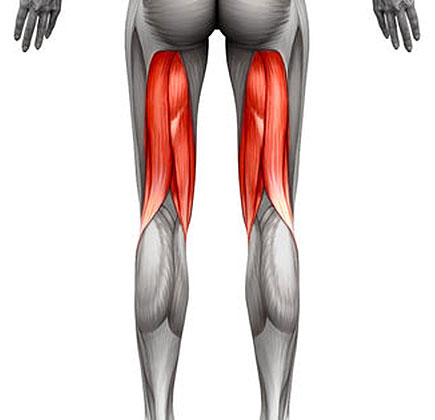
Gluteals
The gluteal muscles (maximus, minimus and medius) are the major mover in this exercise. The glutes are the most powerful muscle in the body, responsible for helping in most movements. The glutes assist in hip abduction (raising your leg out to the side), extension of the upper leg (reaching your leg backwards), as well as hip internal/external rotation. In short, they help with standing, squatting, running, walking, picking things up, jumping, etc.
Erector Spinae
The erector spinae muscles are a group of long and deep muscles that run the length of your spine. Together with other muscles of the back and abdominals, assist in stabilizing the lumbar spine during movement.

Performing the Glute Bridge
- Lie on your back with your knees bent (90°) and feet flat on the floor, shoulder width. Place your hands to your side, palms down.
- Inhale to prepare for the move.
- Exhale, draw your belly button to your spine and raise your hips up to a bridge position.
- Pause, inhale at the top of the bridge, and then exhale as your lower your hips back to the start position.
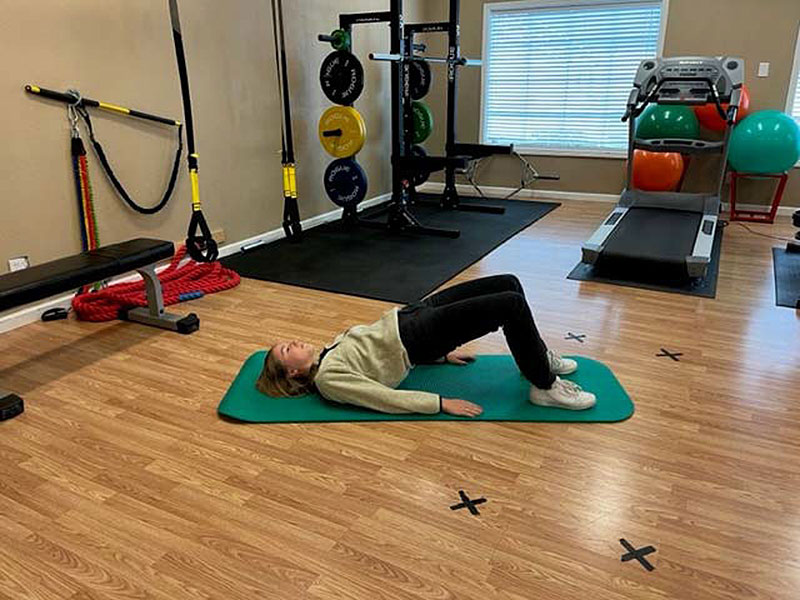
Glute Bridge Progressions
The gluteus medius is active in single leg exercises that require stabilization of the pelvis (such as running or hiking). To involve the gluteus medius to a much higher degree, use a resistance band around your thighs and press your knees outward as you perform the exercise.
Ball Bridges
Using a gym ball or a chair, perform the bridge with your legs straight. Raise your pelvis up to parallel to the floor and hold (more stabilization focus). Hold this position for a 5 count and then lower your hips to the floor.

To work more into the hamstrings, bend your knees to 90° and dig your heels into the ball as you raise up to the bridge. Hold the position for a 5 count and then lower your hips to the floor.
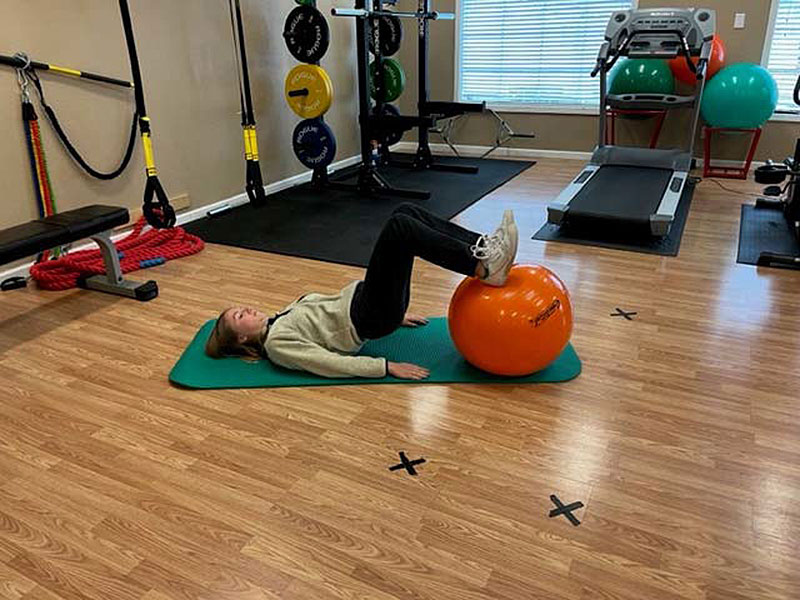
Performing a few sets of bridges a few times per week can easily fit into most of our schedules and will go a long way towards improving and maintaining hip strength, balance and function.
For more tips and ideas on improving strength and balance, contact the physical therapists at Alves & Martinez Physical Therapy & Athletic Performance.

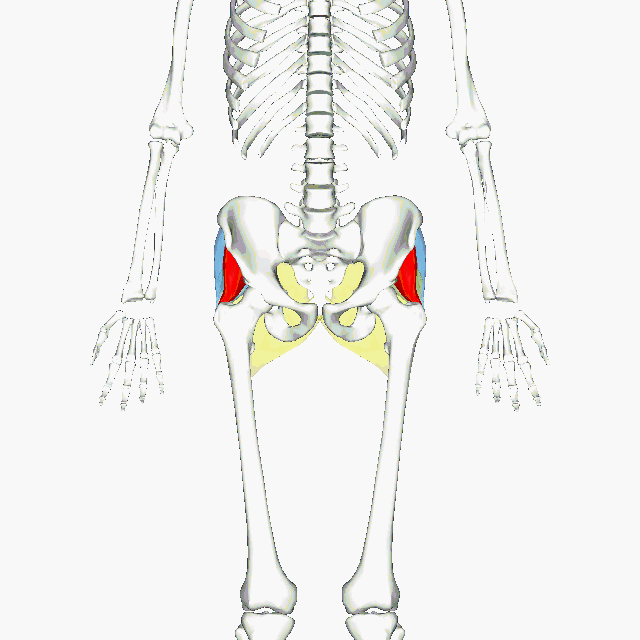
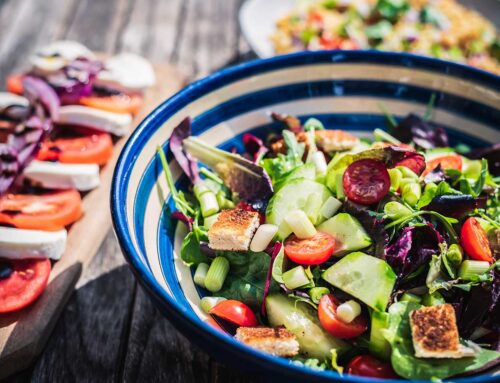
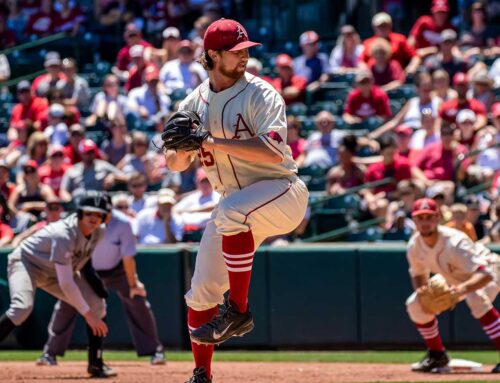

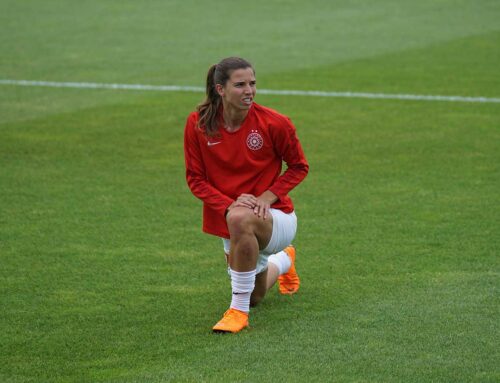
Leave A Comment